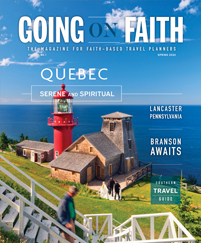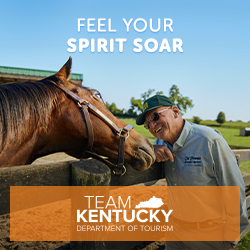Join the Army in Fayetteville
About 135 miles east of Charlotte, Fayetteville has carved out a niche as one of the most patriotic destinations in the country. The city bills itself as the unofficial home of the Army, thanks to the proximity of Fort Bragg, one of the largest Army bases in the United States.
Groups that visit Fayetteville often go to Fort Bragg, where step-on guides offer half-day and full-day tours. In addition to seeing sights around the base and visiting the 82nd Airborne Division War Memorial Museum, participants can have a number of up-close and interactive experiences with soldiers. Options include parachute packing with Aerial Delivery and Quartermaster Rigger, a question-and-answer session with members of the Golden Knights parachute team and an airborne jump demonstration at Sicily Drop Zone.
Tours of the base are available Tuesday through Thursday and require advance reservations. The Fayetteville Area Convention and Visitors Bureau can assist group leaders in making these arrangements.
While you’re there: Learn more about military history at the Airborne and Special Operations Museum. The self-guided tour walks visitors through more than 70 years of airborne service and special operations history.
Wilmington Historic Homes
After driving southeast for about 90 minutes from Fayetteville, groups will arrive in Wilmington, a town near the Atlantic Coast that is famous for its historic charm. At the heart of this is the 230-block National Register Historic District, which features many hundreds of beautiful historic homes.
Many of the homes in the district are still private residences, but some of the most impressive mansions in town now serve as house museums, where visitors can see beautiful architecture and learn about early citizens of Wilmington and how they shaped its future. One of the oldest, the Burgwin-Wright Museum House, was built around 1770 and features classic Colonial architecture and period lifestyle demonstrations.
Wilmington also has a pair of mansions from the middle of the 19th century. The Latimer House Museum was built in 1852 and features Victorian period furnishings and artwork. Another antebellum home, built in 1859, now serves as the Bellamy Mansion Museum of History and Design Arts.
While you’re there: Wilmington’s historic charm, scenic surroundings and Southern friendliness have made the area a popular setting for film and television production. The town has served as the backdrop for such shows as “Dawson’s Creek” and “One Tree Hill,” as well as a number of feature films, and local companies offer tours of filming sites around town.
First Settlers in the Outer Banks
On the northeastern edge of the state, North Carolina’s Outer Banks are a 200-mile-long stretch of barrier islands in the Atlantic Ocean. Many vacationers flock to the area to enjoy the pristine beaches and natural beauty of the islands. But the Outer Banks also has a story to tell about some of America’s first settlers.
In 1585, Sir Walter Raleigh and a group of settlers arrived on Roanoke Island and established the first English settlement in the New World. The 166 settlers later disappeared, earning Roanoke the name “the Lost Colony.” At Fort Raleigh National Historic Site, groups can see where these early settlers lived. The site also has information and programming detailing the roles Native Americans, European settlers and African slaves played in the area until the Civil War.
For more of the story, many groups attend a performance of “The Lost Colony.” Celebrating its 29th year in 2015, this production is the longest-running outdoor drama in the United States and recounts the events leading up to the disappearance of the Roanoke colony.
While you’re there: The Wright Brothers made history on the Outer Banks in 1903 when they achieved the world’s first powered flight for 12 seconds on the beaches of Kitty Hawk. The Wright Brothers National Memorial preserves the site of this first flight and has a museum with a replica of the 1903 Wright Flyer.









